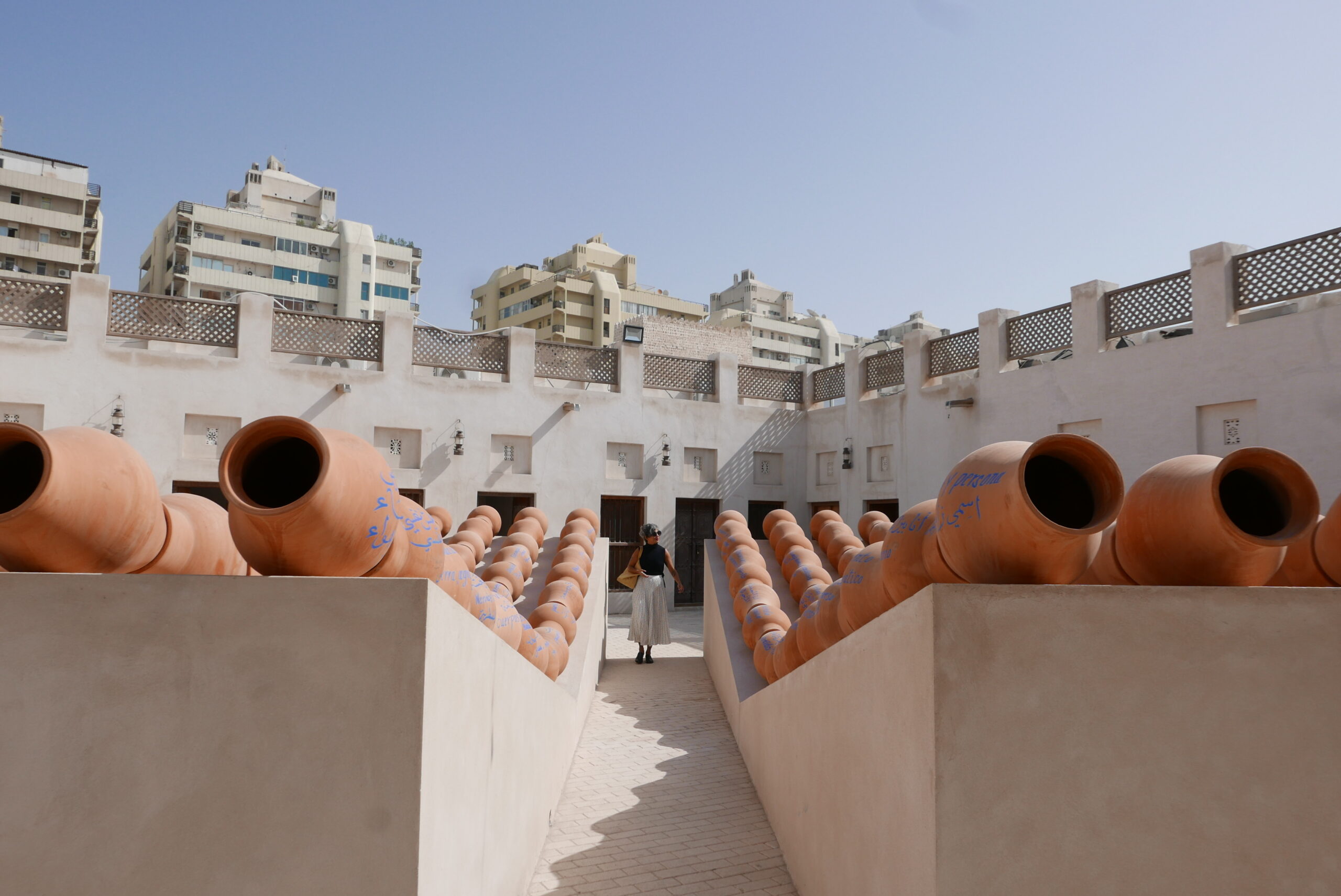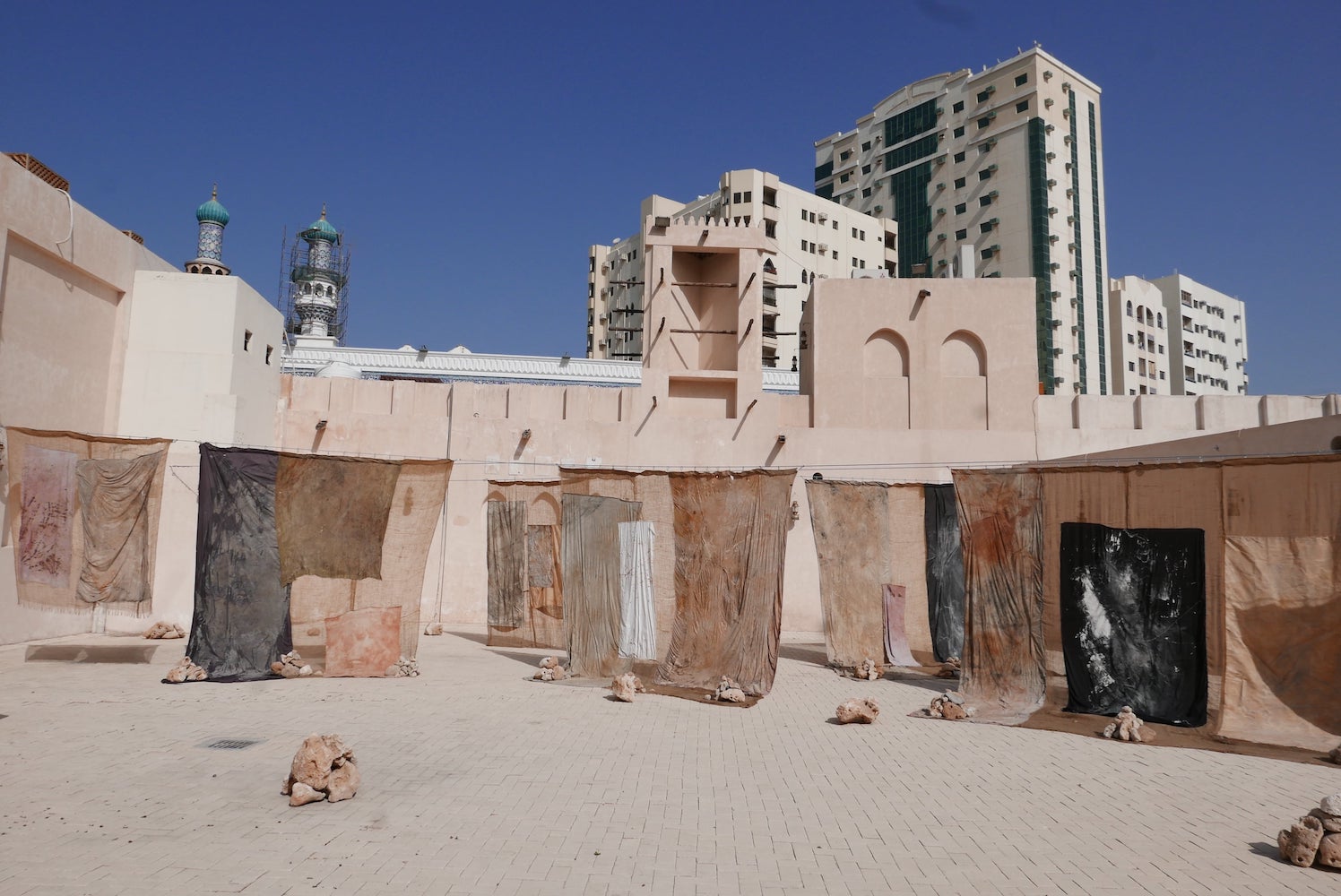Yuko Hasegawa is the curator of the 11th Sharjah Biennial, with a thematic approach taking ideas surrounding globalization and networked cultures as a focus, seeking to forge new connections, outlooks and perspectives in the reading of what it means to be “global” today.
WHITEWALL: What did you have in mind when conceptualizing your approach to the Sharjah Biennial?
YUKO HASEGAWA: I started to think about this region’s geopolitical history and geocultural conditions and found the Islamic courtyard garden to be an ideal point of reference. In the Arab world, courtyard gardens are half social and half private; there are different social levels maintained within this space. The courtyard garden is the place where people talk, and the owner of the house might invite people from outside to enter the garden so as to exchange knowledge. From this, I started to think about how to create links through the garden by mapping different views on how the garden can function as a space.
WW: The metaphor of the garden feels representative of a global territory where distinctions are blurring and merging.
YH: Yes, and it is also this idea of the place of memory. That is very important for a culture. So this was my orientation towards curating this biennial with the metaphor of the courtyard garden. You have to be concerned about the local consciousness but you also have to contribute, too, to the space you are interacting or engaging with.
WW: When you talk about gardens in the context of globalization, you bring in the history of space and territory that proposes a perspective on global history that takes into account geopolitics, which is a sensitive choice for the context of Sharjah, the UAE’s most conservative emirate.
YH: Well in ancient times there was the Silk Road, that route of trade links between the east of Asia and the Middle East up to North Africa, so you have globalization even here, with the circulation not only of trade and money but of culture. This is a structure of globalization.
WW: This relates to the idea of circulation in the global art world and its accompanying proliferation of art fairs and biennales, and the debates of globalization…
YH: But what does globalization mean to this region? Eighty percent of the people living in the UAE are migrant workers. So who is your public? Who are your attendants? I have seen a lot of proposals on how people move in the world but what is more interesting to me now is what happens when these people stay here and how they enter the local culture and mix. It is not so much about how people move, anymore.
WW: But when you talk about this idea of the garden as a metaphor for an exhibition space, which Hu Fang of Vitamin Creative Space has also used when thinking about the gallery as a private space with a public outlook, does it not depend on who is managing the space?
YH: This goes to the need to rework or redefine the conceptual frameworks that define what a gallery, art space or biennale are, both on an emotional and an institutional level. We are interested in languages that are not pedagogical but visual. The biennial is a biennial: it is something that happens critically but it happens in this specific city, too. It is important to make these gatherings, just to invite people into this concept of the Islamic courtyard garden as an entry point. Everything is experimental, so I’m interested to see what happens.
Yuko Hasegawa is Chief Curator of the Museum of Contemporary Art, Tokyo (2006-present) and is also a Professor at Tama Art University, Tokyo, where she teaches curatorial and art theory. Previously, she was Chief Curator and Founding Artistic Director of the 21st Century Museum of Contemporary Art, Kanazawa (1999-2006). Hasegawa has worked on many international biennials, and has held such positions as: Artistic Advisor of the 12th Venice Architectural Biennale (2010), Co-Curator of the 29th Sao Paulo Biennale (2010), and Co-Curator of the 4th Seoul International Media Art Biennale (2006). Hasegawa has curated major thematic group exhibitions, and solo exhibitions by such artists as Matthew Barney, Marlene Dumas, Rebecca Horn, and Atsuko Tanaka. She has served on advisory boards for the Guggenheim Museum and the Venice Biennale, and has authored curatorial essays in publications for museums including The Museum of Modern Art (MoMA).









